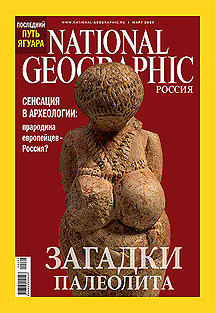National Geographic Russia in March

Sensational archeological material opens the March issue of National Geographic Russia. Where did the first modern humans appear on our continent? It was previously thought that Homo sapiens first wandered from Africa to Western Europe 40,000 years ago, then to Central Europe and from there across the entire continent. New data from a dig in the village of Kostenka near Voronezh puts that hypothesis in question: By that period, Homo sapiens already lived on the territory of modern Russia. More details can be found in exclusive material published this month in National Geographic Russia.
Also in this issue:
Saving the planet is easy. We already know how to slow climate change quickly and at minimum expense. With only a modicum of effort and at very little cost, most of us could reduce our energy consumption by at least 25 percent. By doing so, we would not only stop global warming, but each family would also save a significant amount of money.
Battle of the giants. Whenever people talk about predators of the sea, they rarely mention sea elephants. After all, the sea elephant lacks the kingly ways of the sperm whale, the fast-moving elegance of the white shark and the intelligence of the dolphin. The ungainly animal is about the size of a passenger car. But under the dumpy exterior of that chubby denizen of the deep there hides a superhero characterized by frequent acts of bravery.
Ways to loot. The land of Palestine has seen many. The same is true today, when periods of peace have alternated with bloody conflicts. Civilizations and peoples have appeared and sunk into non-existence. Many of them have left deep traces in history – as well as valuable artifacts preserved in this ancient land.


